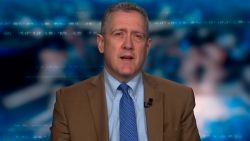Rapidly rising prices have caused economic hardship for millions of Americans. But drastic action to rein in prices could lead to even more pain, including job losses.
Overall prices jumped 7.5% during the last year, according to the January consumer price index reading, the fastest pace in nearly 40 years. The increases have squeezed household budgets for consumers, caused political problems for Joe Biden and resulted in calls for the Federal Reserve to take relatively severe action, such as its first half-percentage-point hike since 2000.
But some economists are cautioning that would be a very bad idea, hurting the people that the battle on rising prices is meant to help.
That’s because the main tool available to the Fed to fight inflation — raising interest rates — is designed to curb inflation by slowing what has been a very strong economy.
Even with the best year of economic growth and job gains in decades, the economy still has 2.5 million fewer jobs than it did heading into the pandemic. So employers need to continue hiring. But a slower economy means fewer job gains, perhaps even job losses for the lowest income segment of the workforce.
“The people you’re drafting into the fight against inflation when you raise interest rates and slow the economy are the most vulnerable,” said Robert Reich, the former US Labor Secretary under President Bill Clinton and a professor of public policy at the University of California, Berkeley. “The purpose of raising interest rates is to take the air out of the sails of the economy. If it works, you are by definition are going to have fewer jobs. Even small increases in interest rates, if they have the desired effect, will cause job losses and wage losses.”
Still it’s clear that high prices are a major concern for many Americans. It is widely accepted that the Fed must take action against inflation.
Rate hike history a reason for concern
The last time the Fed hiked rates by a half point in a single move was May 2000. The labor market was exceptionally strong then. Unemployment had hit what was then a 30-year low of 3.8% in April of that year.
Although the consumer price index in March of that year was 3.8% – about half of what it is today – it had more than doubled over the previous 12 months, raising concerns about inflation.
The Fed, which had raised rates by one quarter point five times since the previous June, decided to get even tougher with a half-point hike in May 2000.
The economy did not take it well.
Private sector employers, who had added jobs every month in the previous five years, suddenly cut jobs in May 2000.
They returned to adding jobs for most of the rest of the year but then started trimming jobs most months starting in early 2001 —losses that continued for three years. Many experts blamed the job losses on the bursting of the dot-com bubble, which occurred in the summer of 2000. But many job cuts came in non-tech sectors such as construction, retail, automaking and airlines.
The economy fell into recession in early 2001, and the Fed was soon cutting rates a half-point at a time to try to pull the economy out of recession. Even if the recession was “mild” by economic standards, the jobless recovery that followed was no one’s idea of a strong economy.
That’s what has many critics of war on inflation so worried.
“Every time the Fed has tried to slow the economy by bringing prices under control, it has overshot,” said Reich.
Fed powerless to fight much of inflation
One big concern for Reich and other critics of tighter monetary policy is the belief that most of today’s inflation pressures are coming from things that the rate hikes will do little to control.
Much of the rise in oil prices came due to geopolitical issues, such the decision by OPEC+ nations to cut production when demand for oil plunged in the beginning of the pandemic. But demand came back more quickly than expected, and supply has not kept up with that demand.
Prices on the world’s commodity markets are up more recently because of concerns that Russia, one of the world’s leading oil producers, will invade Ukraine and be subject to economic sanctions, further driving up oil prices.
A 40% rise in gasoline prices by itself has raised the overall consumer price index by 1.5 percentage points in the last year.
Record car prices are another major factor, and those have been driven higher by a shortage of computer chips and other parts, which forced automakers around the globe to temporarily halt production. The reduced production has affected both new and used car prices, and together those car prices raised overall CPI by about 2.2 percentage points.
So 3.7 percentage points, or just less than half, of the 7.5% increase in CPI is due to the increased price of those three items alone – gasoline, new vehicles and used cars.
“Most of the inflation we’ve seen over the last 15 months has been about extreme distortions the pandemic has put on the economy,” said Josh Bivens, director of research at the Economic Policy Institute, a liberal think tank.
Rate hikes could hit your home value
One segment of the economy on which the Fed can have an impact by raising rates is the housing market. This is another segment of the economy that has seen drastic price increases, with the average home value increasing a record 16.9% in 2021. That has had an impact on rents as well, and priced some buyers out of the housing market.
Higher mortgage rates will serve to cool housing price increases, even as it continues to lift the cost of buying a home.
The fed funds rate, which the Fed sets, doesn’t directly correspond to most mortgage rates, but it influences the bond market, which does. And so the anticipation of future rate hikes by the Fed has already started to lift mortgage rates, with a 30-year fixed rate mortgage rising by nearly a full percentage point in the last year to 3.69% according to Freddie Mac.
If those rates continue to climb, housing price increases are likely to slow, or evenreverse. That would be good news for home buyers, and perhaps for renters, but bad news for homeowners. And that could slow consumer spending.
“Any time housing prices fall, because [homes are] such a big part of wealth, there’s going to be some cutback on consumption,” said Bivens.
And there are other risks from lower housing prices, including less home building to alleviate a housing shortage in many markets. At the most extreme it was a bursting of a housing bubble that caused the Great Recession. Most economists don’t expect that to happen again, but many dismissed the chance of a housing bubble bursting the last time it happened.
How quickly can rates be raised safely?
When the pandemic hit, the Fed cut its fed funds rate by 1.5 percentage points to essentially zero. It has stayed there ever since.
Many economists came into the year expecting the Fed to raise rates three or four times by a quarter point each time. The rising inflation pressures now has some calling for a half-point increase right off the bat, and nearly 2 percentage points of increase overall throughout the year.
Bivens doesn’t necessarily oppose the Fed starting to raise rates, but he would advocate doing it slowly with small quarter-point increases, and perhaps not at every meeting, as policymakers wait to see if the pandemic-inflated prices return to normal.
“Yanking down on aggregate demand level by raising rates would be a machine gun approach to something that needs a scalpel,” he said.
Even some economists who would raise rates faster than Bivens agree there will be economic pain caused by doing so.
“The mechanism by which monetary policy addresses inflation is it slows down the economy. It’s a very, very painful path,” said Justin Wolfers, professor of public policy and economics at the University of Michigan. Still, he believes that the current rates are low enough, especially in comparison to the inflation rate, to make rate increases less risky than some past hikes.
But Wolfers says there is a risk that the economy will start to lose jobs, rather than just slow the pace of job increases, once the Fed starts to raise rates.
“What (Fed Chairman Jerome) Powell is hoping for is a so-called soft landing, creating a small number of jobs each month, and allowing the economy to go sideways and it catches its breath,” he said. “There’s a long history in the US and elsewhere of failing to achieve that soft lending.”
– CNN’s Matt Egan contributed to this report
























